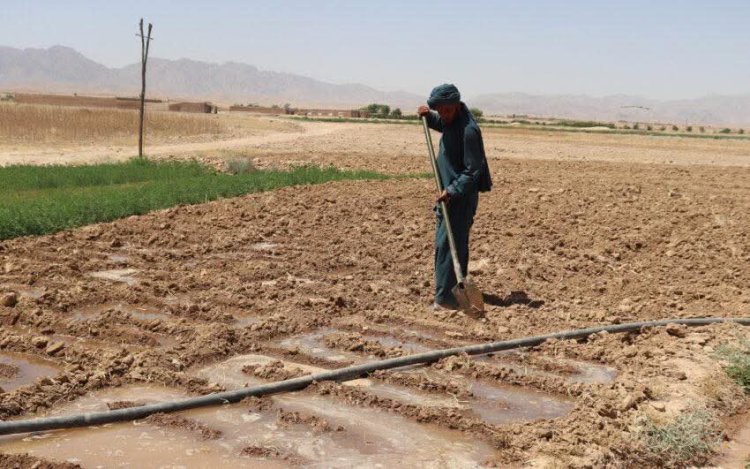Thirsting Lands, Fading Lives: Inside Afghanistan’s Drought

In recent years, much of Afghanistan has been gripped by relentless drought, accelerating climate change, and severe water shortages that have pushed rural communities to the brink. Harvests have declined sharply, canals have dried up, and once-fertile stretches of farmland now stand barren and cracked under the sun.
For farmers like Gulab Khan, a 47-year-old from Kandahar’s Maiwand district, the crisis has rewritten the rhythm of life. This year he planted wheat as usual—but with little water and almost no rain, the yield was minimal.
“Before, I cultivated all 12 jeribs of my land (about 2.4 hectares), and I had good harvests,” he says. “Now, water reaches only part of it. Eight jeribs (about 1.6 hectares) lie barren, and the fields I did plant produced very little.”
He explains that plant pests—made worse by the changing climate—have also eaten into his crops. Despite his effort, his land no longer provides the security it once did.
“Every year I fear my land won’t be able to support my family.”
Hundreds of kilometers away, in Zabul province, farmer Mohammad Ghulam faces the same struggle. Agriculture and livestock are his family’s only source of income, but years of recurring drought have pushed him close to collapse. This year, he says, most of his crops failed entirely.
“Zabul has felt the same waves of drought seen across the country,” he explains. “Whatever I plant gets destroyed. The harvests of maize, wheat, and other grains are nothing like before.”
He remembers earlier years, when farming still felt possible:
“In previous years I would get around 100 man per jerib (approximately 400 kg per jerib). Now I don’t even get 30 man (about 120 kg).”
The drop, he says, has made it nearly impossible to survive.
In Paktika’s Khairkot district, farmer Mir Aqa tells a similar story. He cultivated wheat on about 30 jeribs of land (roughly 6 hectares), but the drought scorched the fields long before harvest time, leaving him with heavy financial losses.
Despite recurring natural disasters—especially droughts and flash floods—he says neither aid agencies nor the Taliban-run local authorities have offered meaningful assistance.
“I planted around 150 man of wheat (about 600 kg),” he says. “In the end, I brought home only 50 man (around 200 kg). The crops burned under the sun and died because there was no water. I prepared the land twice, but drought destroyed everything.”
Like thousands of farmers across Afghanistan, he fears that continued water shortages will soon make it impossible to sustain his family at all.
